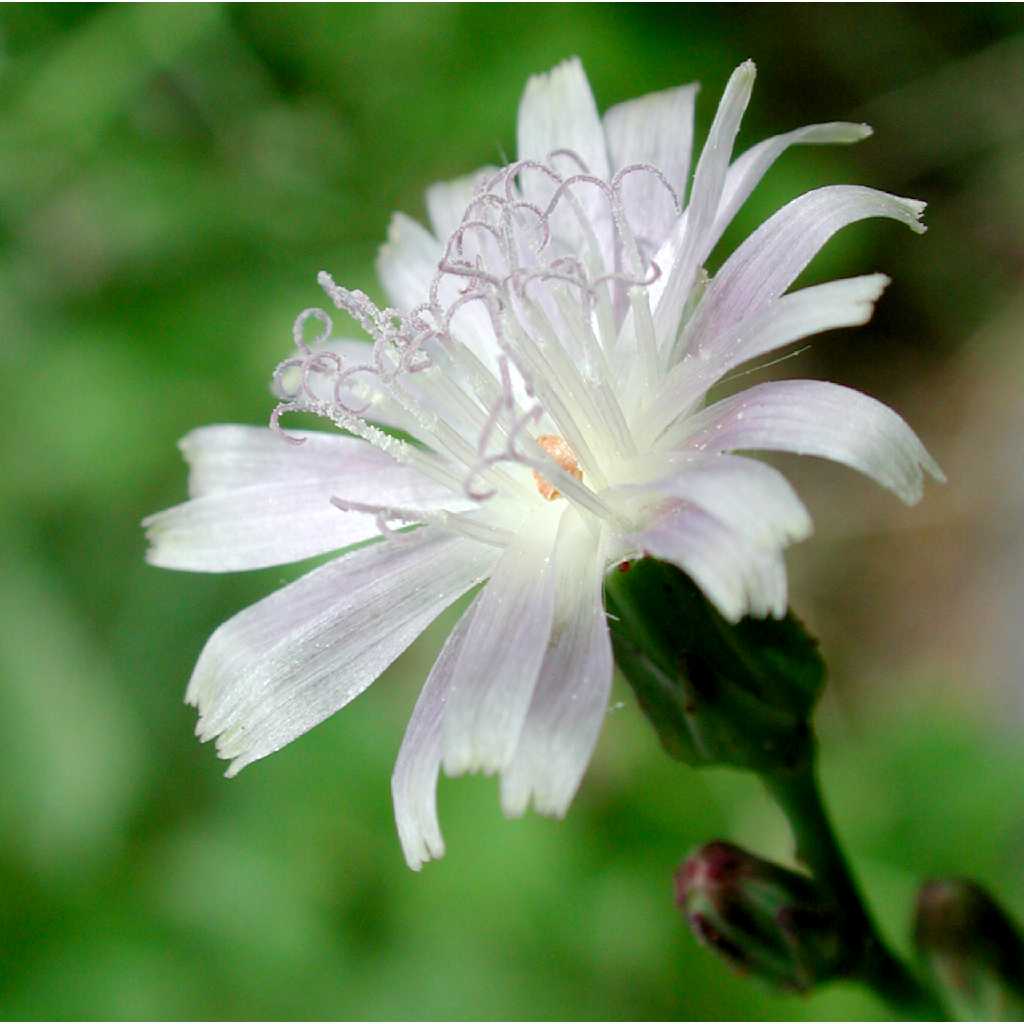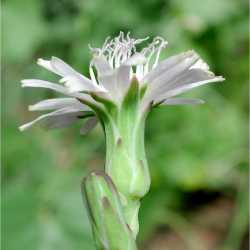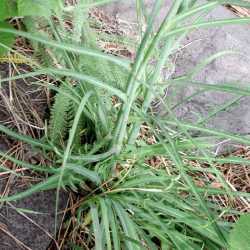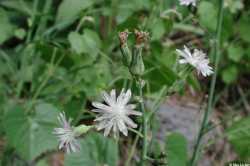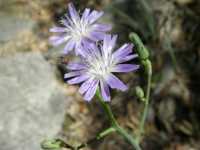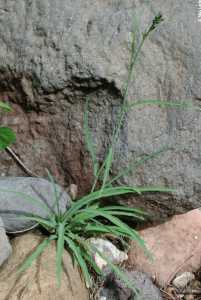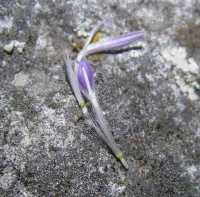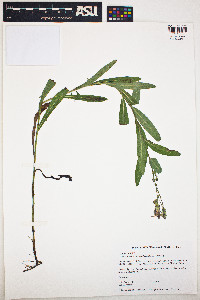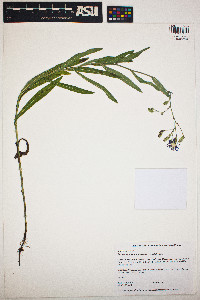|
|
|
|
Family: Asteraceae
blue lettuce
[Lactuca oblongifolia Nutt., moreLactuca tatarica subsp. pulchella (Pursh) Stebbins, Lactuca tatarica var. heterophylla (Nutt.) Boivin, Lactuca tatarica var. pulchella (Pursh) Breitung, Mulgedium pulchellum (Pursh) G. Don] |
Leaf blades 3-12(-18) cm × 5-25(-35+) mm. Involucres 12-15+ mm. Cypselae: bodies 4-5+ mm, beaks 0-1 mm; pappi 7-9(-12+) mm. 2n = 18. Flowering Jun-Sep. Calcareous sites, clearings in forests or shrublands, meadows, roadsides, stream banks, other wet sites; 800-3200 m; Alta., B.C., Man., N.W.T., Ont., Que., Sask.; Alaska, Ariz., Calif., Colo., Idaho, Ill., Ind., Iowa, Kans., La., Maine, Mich., Minn., Mo., Mont., Nebr., Nev., N.Mex., N.Y., N.Dak., Ohio, Okla., Oreg., Pa., S.Dak., Tex., Utah, Wash., Wis., Wyo. The type of Mulgedium pulchellum may be conspecific with that of M. tataricum (Linnaeus) de Candolle, a Eurasian species. Or, if 'perennial' plus 'Fl. blue' constitutes sufficient description for valid publication of the name Lactuca oblongifolia Nuttall (1813), then a new combination in Mulgedium based on that name may be appropriate for what is here called M. pulchellum. Presence of Mulgedium pulchellum in Texas is based on a single, early collection.
Perennial 2-10 dm from deep-seated creeping roots, glabrous or glabrate; lvs elongate, 5-18 cm נ6-35 mm, entire, or the lower ones ±lobed, rarely sharply denticulate, often glaucous beneath; heads several or numerous, very showy, with 18-50 blue fls; invol 15-20 mm in fr; achenes 4-7 mm overall, the slender body moderately compressed, prominently several- nerved on each face, the beak stout, often whitish, up to as long as the body; 2n=34. Mostly in meadows, thickets, prairies, and other moist low places; Alas. to Calif., e. to Minn. and Mo., and occasionally intr. eastward. June-Sept. (L. tatarica ssp. p.; L. oblongifolia) Gleason, Henry A. & Cronquist, Arthur J. 1991. Manual of vascular plants of northeastern United States and adjacent Canada. lxxv + 910 pp. ©The New York Botanical Garden. All rights reserved. Used by permission. FNA 2006, Kearney and Peebles 1969, McDougall 1973 Duration: Perennial Nativity: Native Lifeform: Forb/Herb General: Herbaceous biennials to perennials, to 100 cm tall, glabrous, stems leafy, with milky sap, plants with spreading rhizomes. Leaves: Alternate, linear-lanceolate to oblong, 5-15 cm long, margins entire to dentate or pinnatifid, not spinulose, faces glabrous. Flowers: Heads small to medium, radiate, rays blue to purple, disk flowers blue, with extruded blue stamens and anthers, involucres 14-20 mm high, cylindrical, phyllaries overlapping in 3-4 series. Fruits: Achenes strongly flattened, to 4 mm long, with several ribs on each face, contracted into a beak with a disk at the apex, the beak about half as long as the body. Pappus of white, copious, early deciduous capillary bristles. Ecology: Found from 6,000-7,500 ft (1829-2286 m); flowering summer. Distribution: Saskatchewan to British Columbia, south to Missouri, New Mexico, Arizona, and California. Notes: Look to the blue flowers, the phyllaries in 3-4 series, and the ribed achenes with sort beaks to help identify this species. Look for this species under L. pulchella in older texts. Ethnobotany: An infusion of the plant was used to treat diarrhea, a polutice of the roots was applied to piles, and the roots were used as chewing gum. Etymology: Lactuca is Latin for milky sap, while tatarica is a reference to Tatars, the Turkic peoples living in the old USSR, while pulchella is derived from the Latin for beautiful. Synonyms: None Editor: LCrumbacher 2011 |
|
|
|


